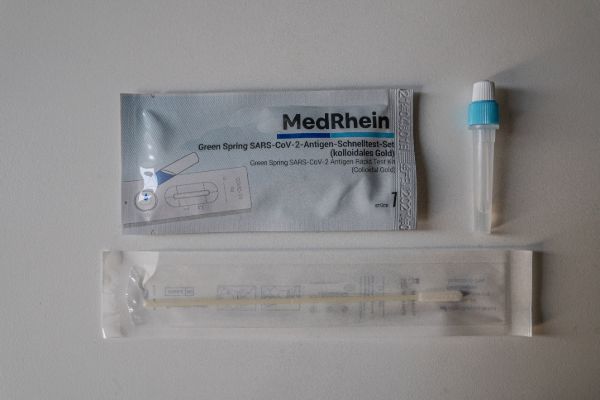Strep throat is one of the most common bacterial infections among young school age children, most prevalently in kids between the ages of 5 to 15 years of age. The infection (strep throat) occurs when Group A streptococcus (GAS) bacteria overwhelms the body’s natural defenses and invades the pharyngeal tissue causing painful inflammation of the throat, tonsils and surrounding tissue, resulting in strep throat.
Anyone can get streptococcal sore throat, strep is an equal opportunity infection the inflammation and pain is not limited to children, strep is responsible for 15 to 40 percent of sore throat in kids and also 5 to 15 percent of sore throat in adults. Strep throat is very contagious; it is spread from person to person from coming in contact with an infected person or contact with items contaminated with the streptococcal bacterium.
What are the Symptoms of Strep Throat?
Strep throat symptoms often come on suddenly and can seem much like a common cold at first, unfortunately as the streptococcus germs take over symptoms typically worsen; some common strep throat symptoms may include the following:
- Fever
- Rash
- Chills
- Coughing
- Sneezing
- Headache
- Fatigue
- Loss of appetite
- Inability to swallow
- Swollen, tender lymph nodes
- Sore throat with red spots and or white patchy streaks
- Stomach ache and possible vomiting (particularly in children)
How do you get Strep Throat?
Due to the strep symptoms of coughing and sneezing strep throat spreads easily especially among children in school who are in close quarters and typically sharing common bathrooms, school supplies, equipment, food and drinks that may be contaminated with the strep bacteria. Adults spread it just as easily at work too, basically for the same reasons as children do, sneezing and coughing, close working environment, and sharing telephones, computers, break room and unfortunately germs.
A person with strep throat who does not seek proper antibiotic treatment from a medical professional will be highly contagious during the most severe stages of their strep throat infection, and will remain contagious for as long as 21 days, this is why it is important to see a doctor right away if you suspect you or your child may have strep throat.
How is Strep Throat Diagnosed?
In a two step process
Part 1
Diagnosing strep throat is a fairly straight forward process that consists of your doctor conducting a physical examination and a few simple lab tests. Your diagnosis will come in two parts, the first of which will be the physical exam. During this portion of the physical examination your health care provider will take a detailed history of your health as well as the complaints that have brought you to seek care.
Armed with your health history the physical portion of your exam will begin, whereby your doctor will take your temperature, examine your throat checking for the multiple possible signs of strep such as; inflammation of the throat and surrounding tissue, red swollen tonsils, red spots on the hard or soft palate, and or white streaks of pus, touching and feeling your lymph nodes and glands to check for signs of swelling and tenderness.
Part 2
The second part of your diagnosis will require the following diagnostic tests:
- During your examination your doctor may want to take a throat culture as the second part of diagnosis. The procedure involves your doctor taking a long cotton swab to gently swab the back of your throat to gather a sample of the fluid or pus in the inflamed portions of your throat. The swab can be used for two diagnostic tests:
- Rapid Antigen Test – This test is performed in the office and will give results in minutes rather than days, it is used to detect the presence of the streptococcus antigens. If the antigens are present your doctor can then begin antibiotic treatment right away.
- Throat Culture – This test is given when rapid antigen tests are inconclusive, also to rule out other types of infection, and to try to identify the types of bacteria present. This may be useful in prescribing more specific antibiotics for treatment of severe strep throat cases.
What is the Treatment for Strep Throat?
Typically treatment for strep throat consists of prescription oral antibiotics and home health care remedies and over the counter medications. Once you or your child have begun antibiotic treatment, after 24 hours have passed you or your child may return to work, day care, or school provided you feel up to it and have no fever. Once you are on antibiotics (after 24 hours) you will no longer pose a threat of spreading strep.
Treatment for other strep symptoms may be treated with over the counter medications and pain relievers such as:
- Pain relieving throat sprays or lozenges
- Fever reducers (do not use aspirin for children)
- Gargling with warm water and salt three times a day
- Getting plenty of rest
- Drinking lots of fluids
- Eating throat soothing foods, avoid spicy and acidic food and drink
- Avoid irritants such as smoke, chemical fumes, allergy triggers
If you or your child is not showing signs of improvement after 48 hours of antibiotic treatment you need to contact your doctor, you may need a different or additional prescription for antibiotics. If you or your child’s symptoms worsen you should see your doctor immediately or go to your local urgent care center for immediate examination.
